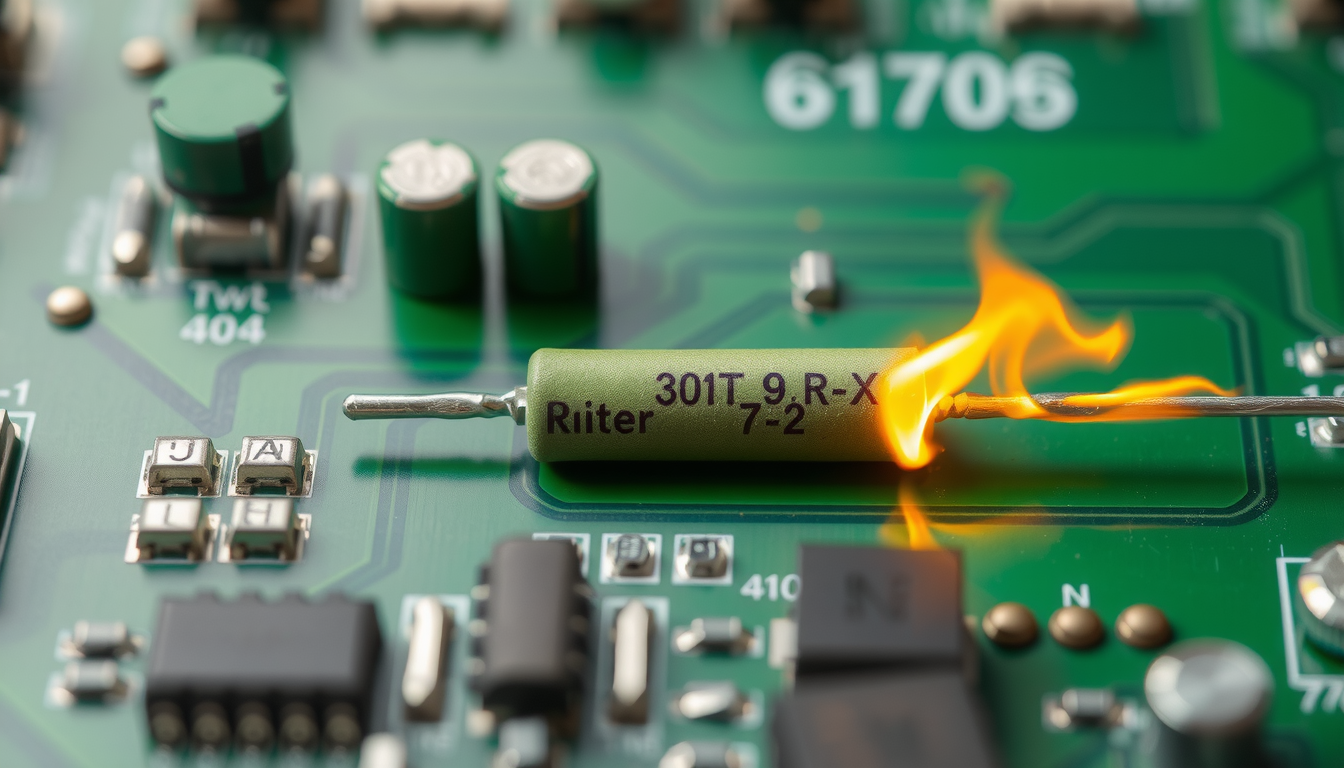Resistors are among the most reliable electronic components, yet they can fail over time due to various factors. Understanding why resistors go bad and learning how to identify faulty ones is crucial for diagnosing electronic circuit issues.
Why Do Resistors Fail?
-
Excessive Heat
- Resistors dissipate energy as heat. If the power rating of a resistor is exceeded, it can overheat, leading to failure.
- Prolonged exposure to high temperatures can cause thermal degradation, leading to changes in resistance values or complete burnout.
-
Electrical Overload
- Voltage or current surges, such as those caused by lightning strikes or power spikes, can exceed a resistor's capacity.
- Overloads can cause resistors to crack, burn, or fail open (no current flow) or short (uncontrolled current flow).
-
Environmental Factors
- Humidity, moisture, and corrosive environments can damage resistors, especially if the protective coating degrades.
- Dust and debris can also accumulate, leading to partial shorts or changes in resistance.
-
Aging and Wear
- Over time, resistors may drift in value due to material degradation, particularly in carbon composition and film resistors.
- Repeated thermal cycles can cause mechanical stresses, leading to micro-cracks or weakened connections.
-
Physical Damage
- Mishandling, such as bending leads too forcefully or improper soldering, can damage resistors.
- Vibrations or mechanical shocks in high-stress environments can also cause breakage.
Signs of a Bad Resistor
-
Visible Damage
- Burn Marks: Darkened or burnt areas on the resistor body indicate overheating.
- Cracks: Cracks in the resistor body often result from thermal or mechanical stress.
- Discoloration: Faded or altered color bands can indicate excessive heat exposure.
-
Open Circuit
- A resistor with no continuity (infinite resistance) is considered open and cannot pass current.
-
Changed Resistance Value
- A failing resistor may drift from its specified resistance value, either increasing or decreasing unpredictably.
-
Intermittent Behavior
- Faulty resistors can cause intermittent circuit performance, such as flickering LEDs or erratic operation.
-
Circuit Malfunction
- Symptoms like overheating, inconsistent performance, or complete failure of a device can point to a bad resistor.
How to Identify a Faulty Resistor
-
Visual Inspection
- Look for physical damage such as burn marks, cracks, or discoloration.
-
Multimeter Testing
- Measure Resistance: Use a multimeter to measure the resistor's resistance value. Compare it with the expected value from the color bands or circuit specifications.
- Continuity Check: Test for continuity to ensure the resistor is not open.
-
Heat and Odor
- Faulty resistors often become hot to the touch. Additionally, the smell of burnt material may indicate failure.
-
IR Thermometer or Thermal Imaging
- Identify hot spots in the circuit where resistors may be overheating.
-
Signal Tracing
- In advanced diagnostics, use an oscilloscope to trace signal paths and detect abnormalities linked to resistors.
How to Prevent Resistor Failure
-
Use Proper Ratings
- Select resistors with appropriate power ratings, considering possible surges or environmental factors.
-
Ensure Proper Cooling
- Allow adequate ventilation and use heatsinks or cooling systems if needed.
-
Use Quality Components
- High-quality resistors are less prone to failure due to precise manufacturing and better materials.
-
Protect Against Surges
- Use surge protectors or varistors to safeguard against electrical overloads.
-
Inspect and Maintain
- Regularly check circuits for signs of wear, especially in harsh environments.
Resistors, though simple, are vital components that can cause significant issues when they fail. Understanding why resistors go bad and learning to identify faulty ones helps ensure the reliability of electronic devices. Through proper selection, maintenance, and testing, you can prevent or quickly diagnose resistor-related problems.
